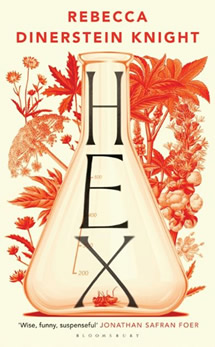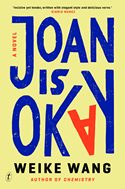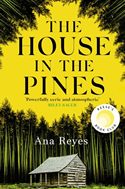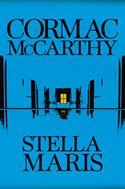Reviewed by Robert Goodman.
By Rebecca Dinerstein Knight, Bloomsbury, $29.99.
 Rebecca Dinerstein Knight’s first novel The Sunlit Night has become a movie and it is possible to see her second novel Hex going the same way. While it is written in second person and is almost stream of consciousness at some points, it also is designed around a six not particularly likeable but very recognisable characters and is delivered in an almost perfect three act structure. The first section introduces the players and their relationships, the second mixes them up and then brings them together for a boozy, revelatory party and the third follows the aftermath of that event.
Rebecca Dinerstein Knight’s first novel The Sunlit Night has become a movie and it is possible to see her second novel Hex going the same way. While it is written in second person and is almost stream of consciousness at some points, it also is designed around a six not particularly likeable but very recognisable characters and is delivered in an almost perfect three act structure. The first section introduces the players and their relationships, the second mixes them up and then brings them together for a boozy, revelatory party and the third follows the aftermath of that event.
Nell Barber introduces herself on the first page of what turns out to be a journal. A journal that is written in second person as it is addressed to the object of her desires and affections, her botany lecturer Joan. When the book opens Nell is in a bit of a state. She has been expelled from Columbia university after one of her fellow researchers died from a poison they were jointly studying, she has broken up with her boyfriend Tom and finds herself working the midnight to dawn shift at a local bar to make ends meet. Besides her ex, and her obsession, Nell also introduces the rest of the cast – her best friend Mishti and Mishti’s boyfriend Carlo and Joan’s philandering but wealthy and, it turns out influential on campus, husband Barry. The emotional stakes heat up when Mishti starts seeing Barry and Tom takes up with Joan and the shifting relationships come to a head when they are all invited by Joan for a Christmas dinner.
Hex falls in the tradition of campus novels such as Donna Tartt’s The Secret History, Michael Chabon’s The Wonder Boys, or more recently Kate Weinberg’s debut The Truants which dealt with a similar undergraduate obsession with their professor. What sets Hex apart is Nells’ devotion to the art of herbal toxicology and the way in which her journal delves into the world of plants and poisons. It also gives rise to what can only be described as Chekov’s castor bean as Nell works to germinate the plant that is used not only for castor oil but also to produce the extremely deadly nerve toxin ricin.
Nell herself is a (self-confessed) damaged individual and her confusion and ambivalence is laid bare in her journal. The other characters come across as types, and types that readers may have encountered before. And in the end, there is not much more to this than shifting relationships between a group of twentysomethings and their mentors. So while it is often surprisingly and inventively delivered, reader’s tolerance for Hex will probably depend on their interest in following a group of narcissistic college students and their flawed role models.
This and 500 more reviews can be found at www.pilebythebed.com.











